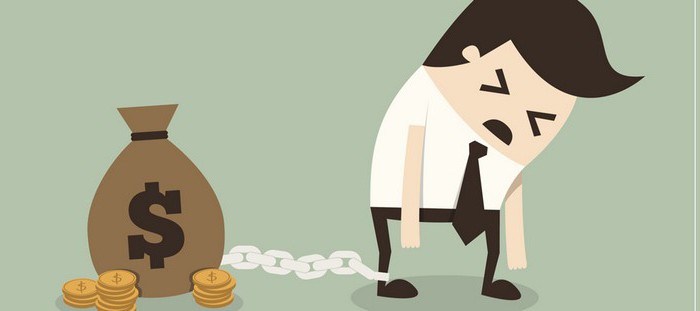The liability of the employee and employer is defined in the Labor Code. The legislation establishes various grounds for its occurrence, the rules for compensation for harm caused. Consider some cases of employee liability. 
Grounds
The employee’s liability for the damage occurs if the employer can prove:
- The fact of harm.
- The violation committed by the employee, as a result of which the damage was caused.
- The presence of a causal relationship.
- Amount of harm.
- The presence of a contract on the mat. employee responsibility.
To do this, the employer checks the labor discipline of the employee who caused the damage. If necessary, a special commission is formed. The head of the enterprise issues an order determining its composition.
Explanatory
The employee must explain in writing the reasons why he caused damage by his behavior. This requirement is established in Art. 247, part 2 of the shopping mall. In case of refusal or evasion of the employee from the performance of this obligation, the employer draws up an act. Art. 247 of the Labor Code does not establish a period during which an employee must give an explanation. Due to the fact that the employee is held liable on the basis of a disciplinary offense, in such situations the provisions of Art. 193. Part 1, in particular, sets a time limit of 2 business days.
Employee Rights
The employee has the right to familiarize himself with all the materials collected during the verification of the offense that caused the damage. If necessary, he can appeal them, make motions and other methods to facilitate an objective analysis of what happened. In addition, the employee has the right to attract a representative. This possibility is enshrined in part 3 of article 247 shopping mall. As a representative, there may be a specialist who, according to the employee, has the necessary experience and knowledge for a lawful, objective investigation of the charges. 
Features of loss recovery
The procedure for compensation for harm caused is included in the employee’s liability agreement. For hours 1 Art. 238 TC is not refundable for lost profits. The employer can rely on the collection of only direct actual harm. It should be understood as a real decrease in the amount of cash property or a deterioration in the state of values. Liability of the employee and employer extends to objects owned by third parties, but stored in the enterprise. If damage to such property was caused by an employee, the tenant may compensate it in favor of third parties. The head has the right to recover from the employee expenses or excessive payments for the restoration, acquisition of property of third parties.
Types of employee liability
According to the law, the amount of compensation for harm is limited to the average monthly earnings of employees. In this regard, such employee liability is called limited. The establishment of a limit for recovery is explained not only by the legislator’s desire to protect the interests of employees, but also by the conditions in which they fulfill their professional duties.By the end of the shift, self-control often decreases, the ability to adequately assess the danger that always occurs when working with equipment, tools, materials, etc. As a result, there is a marriage, increased wear and tear of production assets. This, in turn, causes the occurrence of material damage. In this case, the law provides for cases when the recovery is not limited to the average monthly salary. They are installed in Art. 243 shopping mall. The first part of this article provides grounds for the full liability of the employee. It is classified depending on the subject composition and nature of the violation.

Employee liability agreement
Such an agreement is concluded with an adult employee when enrolling him in the state, if for the performance of his duties he is entrusted with (transferred) values (including money). The standard form is approved by the Ministry of Labor and Social Development. The agreement establishes the duties and rights of the employer and employee. In particular, the employer must create appropriate conditions for the employee in which the latter will carry out his activities and ensure the safety of the material assets entrusted to him.
If the employer has not fulfilled this duty, in case of damage to property, the employee may be exempted from recovery. The agreement is made in duplicate and remains with each party. The conclusion of the contract is carried out only with the employee who performs professional activities related to the transportation, storage, sale, processing or use of material assets in production. The list of relevant posts is approved by order of the government. Its expansion by local regulations or collective agreements is prohibited.
Art. 243 shopping mall
The full liability of the employee occurs when:
- Lack of values entrusted to the employee in accordance with a special written agreement or received under a one-time document.
- Intentionally causing harm to the property of the employer.
- Damage while intoxicated (drug, alcohol, etc.).
- Causing harm as a result of a criminal act, the guilt of which was proved in court.
- Damage caused by an administrative violation, if measures of influence were applied to the employee or the fact of damage, destruction or embezzlement of entrusted property was established.
- The disclosure of information that constitutes state, commercial or other secret protected by law.
- Damage after hours when using production facilities owned by the employer in their own interests.

Subject composition
The legislation provides for types of employee liability depending on their position. So, in Art. 243 part 2 of the Labor Code, it is installed for the chief accountant, deputy director of the enterprise. The director of the organization is responsible for part 1 of art. 277 shopping mall. On the grounds provided by law, he compensates for the harm caused by his guilty behavior, according to part 2 of this article. An employee under 18 years of age is liable only for:
- Intentional damage.
- Harmful while intoxicated.
- Causing damage as a result of a crime or administrative violation.
Other cases
The liability of employees can be not only individual, but also collective (team). She also comes on the basis of an agreement. The head of the enterprise enters into an agreement with the team if, when they perform work related to the sale, transportation, storage, use or other use of property, it is impossible to establish the limited liability of each employee and issue it with an appropriate document. The agreement is concluded with all members of the brigade. The initiative, as a rule, comes from the head and is formalized by his order (order). This document is attached to the agreement. The contract must include:
- Subject of the agreement.
- Duties and rights of the team and the head of the enterprise.
- The procedure for reporting and accounting.
- Rules for compensation for harm.
The contract must be signed by the head, the head of the brigade and all its members. 
Agreement specifics
The employer appoints the team leader by his order. For the period of absence of the head of the team, his duties are assigned to one of the members. In case of leaving or admitting an employee to the brigade, the contract is not renewed. The re-signing of the agreement is carried out if more than half of the participants from the initial composition drop out or the team leader. When employees are admitted to the brigade, the contract indicates the date of admission to the state. The employees included in the collective sign in the agreement. The contract must contain the obligation of the employer to create the appropriate conditions for the brigade to ensure the safety of the material assets entrusted to them for the performance of the assigned functions.
The head of the enterprise must take timely measures to detect and eliminate the causes that impede the preservation of property integrity. He is also required to identify the perpetrators of the harm, apply the appropriate punishment to them. The contract establishes the liability of employees for direct actual losses, as well as losses incurred by the employer as a result of compensation for harm to third parties.
Compensation Amount
The amount of damage caused to the property of the enterprise is established in accordance with actual losses. They are calculated at the market value in force in the area at the time of the incident. Moreover, the amount of damage cannot be less than the price of lost values according to the financial statements. In the calculations, the level of property depreciation is taken into account. In part 2 of Art. 246 of the Labor Code, legislation may establish a special procedure for determining the amount of damage caused to the head of an enterprise as a result of theft, intentional damage, loss or shortage of certain types of values.
Among them, among other things, include precious metals, precious stones and so on. This provision applies to situations where the actual damage exceeds the nominal size. The Federal Law No. 3 provides for the liability of employees 100 times greater than the actual damage caused to the enterprise.
Limited recovery
Liability of employees for damage may be established in an amount not exceeding:
- Average monthly earnings.
- Three salaries per month.
In the absence of grounds for recovering the increased amount, all employees shall compensate the damage in the amount of the average monthly wage. The grounds are established on which such responsibility comes for the heads of enterprises:
- Damage by excessive payments. Such payments should be understood as the amount of fines, salaries accrued to the dismissed employee as a result of the delay in providing him with a work book due to the fault of the employer, as well as the payment of excessive vacation days without exception to absenteeism.
- Damage due to improper organization of accounting and storage of property, cash.
- Causing damage due to failure to take appropriate measures to prevent downtime, the release of low-quality products, theft, damage or destruction of valuables.

Increased compensation
In what cases does such material liability of employees occur? The Russian Federation is a state that seeks to protect the interests of employees. In connection with this legislation, increased liability is established for employees holding certain positions. In particular, those guilty of illicit transfer of either employee dismissal persons are obliged to compensate for the damage caused in the amount of 3 monthly salaries. A similar penalty has been established for officials with a delay in their execution of a court decision to reinstate an employee in the enterprise.Penalties in such situations are charged to the entity guilty of a clear violation of the law when dismissing or transferring a specialist. Such actions, in particular, recognize:
- Termination of the contract at the initiative of the head without coordination with the relevant elected body of workers (trade union), when consent is required by law or other grounds established in the agreements.
- Dismissal of women in the presence of circumstances in which termination of the contract is unacceptable.
- The dismissal of minor employees from their posts without the consent of the state labor inspectorate and the territorial KDN.
- Termination of the contract or transfer of chairmen and members of trade unions, trade union organizers who are not exempted from production duties in violation of the guarantees established by law.
- Change of employee's place of business without his consent.
- The transfer or dismissal of a member of the board of staff of a team without coordination with the board.
Additionally
The liability of employees is established in court if:
- Employees refuse to indemnify voluntarily.
- The amount of damage is higher than the average monthly earnings.
- The employee resigned, but the debt for the damage was not paid.
The employee has the right to compensate for the damage caused as a result of his actions on his own initiative, partially or in full. By agreement of the parties, an installment plan can be established to pay off arrears. In such situations, the employee makes a written commitment that he will indemnify the damage within a specific time frame. The agreement indicates the exact amount of payments. By agreement of the head of the enterprise, an employee may transfer equivalent property to the tenant as compensation or repair damage to property belonging to the enterprise. Liability of employees may be reduced by decision of the administration of the organization. The head of the enterprise also has the right to refuse to recover harm from employees. In case of damage due to administrative misconduct, the lessee may forward the case file to law enforcement agencies. If there has been a disciplinary violation, the head has the right to apply appropriate measures to the perpetrator on his own.

Conclusion
If material damage occurs, the head of the enterprise must conduct an internal investigation of the incident. In such situations, as a rule, a special commission is created. It includes representatives of the union and the employer. During the investigation, all circumstances of the incident must be established, specific perpetrators identified, the amount of damage determined. If it is impossible to identify the persons who committed the actions that caused harm, the head of the enterprise turns to law enforcement agencies.
Employees have the right to appeal against the actions of the head, to submit petitions, to provide evidence of their non-involvement in the incident. The TC establishes circumstances in the event of which the liability of employees is excluded. This is possible in case of emergency, under the influence of force majeure, if the employer fails to fulfill his obligations to create the proper conditions to ensure the safety of the values entrusted to the employee. An employee may also be exempted from liability in the case of necessary defense, as well as under normal economic risk.
